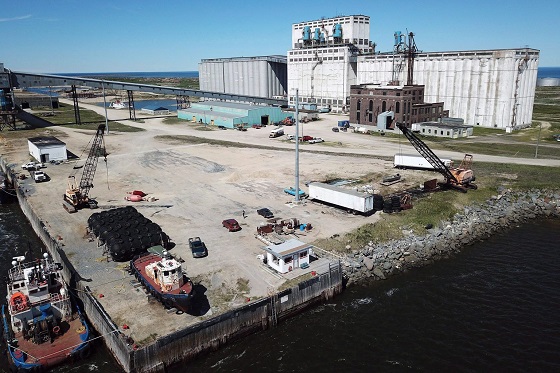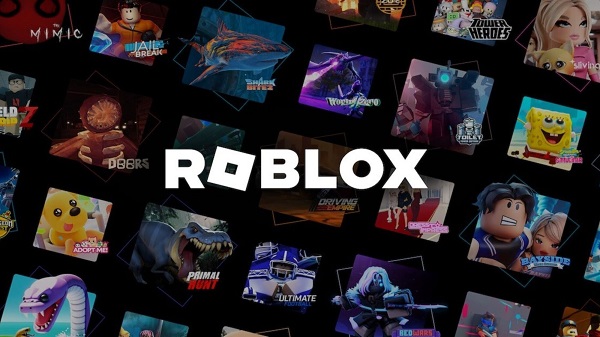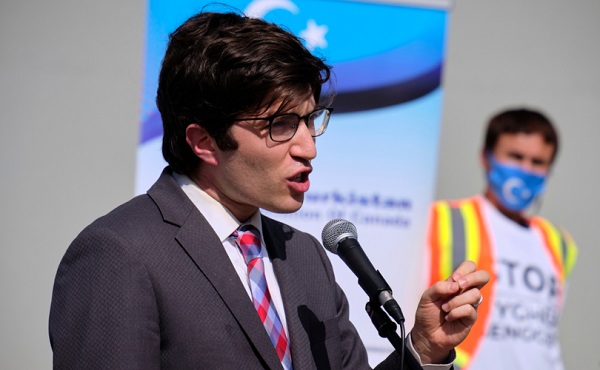Alberta
‘Let’s Find Out’ digs deep into history

A curious mind can lead you in all sorts of unexpected directions, as Chris Chang-Yen Phillips has discovered with his podcast, Let’s Find Out.

Chris Chang-Yen Phillips
He created the show in 2016 as part of his work as Edmonton’s historian laureate. He invites questions about local history and finds out the answers together with his curious correspondents.
“I’m not an expert about all things ‘local history,’ but I am curious and not afraid to ask questions,” he says. “With Let’s Find Out, I’m trying to turn that into a public good in giving people the tools to get to know their city better.”
When his term as historian laureate ended in 2018, he kept the show going, and it continues to earn accolades. The show received a silver medal at the Canadian Online Publishing Awards earlier this year, and it has been nominated for a Canadian Podcast Award in the Documentary category.
He also does live shows from time to time. The next one — Let’s Find Out: How Nature Shapes Us — will take place in Edmonton on Feb. 9, and will form the basis of the next season of the podcast.
Let’s find out a little more about the host of Let’s Find Out:
What will people get out of listening to your podcast?
A. We feature stories and characters you’ve probably never heard before. Whether you’re in the mood for a surprising look at the history of green onion cakes or a deep dive into Alberta’s past eugenics programs, we’ve got a big range of stories.
Listeners tell me all the time that because of our podcast, they now know how to offer protocol to elders, or which libraries and archives might be able to help them out down the road. And in the long run, my mission is to give people a stronger sense of ownership and belonging in this city.
What podcasts do you listen to?
A. I love listening to shows like Radiolab and HowSound because they teach me so much about the craft of good audio storytelling. I also love Terra Informa, an environmental news show based here in Edmonton, because they cover stories nobody else does. I used to help make the show, and I adore the team producing it now.
What is the most interesting comment you’ve received from a listener?
A group of archaeologists told me once that they listened to our episode A Lesson in Protocol in the car on the way to meet an Indigenous elder. The episode is about an illustrator from a settler background who makes a lot of history resources, who wanted to learn more about which food plants have been important to Indigenous peoples in this area. It was a really challenging episode to create and I ended up making one big mistake in real life: I offered tobacco at the end of our conversation with an elder, instead of at the beginning. I included my mistake in the episode, hoping it would be helpful to listeners. These archaeologists said that actually made it memorable, so they were able to pull it off correctly in their own meeting with an elder after listening! That was gratifying.
Do you have any unusual hobbies or talents that would surprise your listeners?
A. I row! And I’m also an illustrator. I’ve recently started sharing comics with the world.
If you could have any guest on your podcast, who would you choose?
A. Someone who lived in this region a few thousand years ago, because people have lived here for so long and I’m just starting to understand how humans and this land have shaped each other over the millennia. Who did they love, what stories did they tell, what were they afraid of, what were their hopes and dreams?
What has been your favourite episode so far?
A. About Green Onion Cakes, because it was such a good excuse to talk about a snack we all love and the messy and complicated history of Chinese immigration and food culture in Canada. Also because it got so many people talking about this humble food and the chef who popularized it here, Siu To.
Be sure to connect with Let’s Find Out on Facebook and Instagram.
Todayville introduces you to members of the Alberta Podcast Network each week. Click here to learn about more Alberta podcasts.
The Alberta Podcast Network, powered by ATB, is on a mission to:
- Help Alberta-based podcasters create podcasts of high quality and reach larger audiences;
- Foster connections among Alberta-based podcasters;
- Provide a powerful marketing opportunity for local businesses and organizations.
Alberta Podcast Network Ltd. is pursuing this mission with funding from ATB Financial and support from other sponsors.
Alberta
Alberta bill would protect freedom of expression for doctors, nurses, other professionals

From LifeSiteNews
‘Peterson’s law,’ named for Canadian psychologist Jordan Peterson, was introduced by Alberta Premier Danielle Smith.
Alberta’s Conservative government introduced a new law that will set “clear expectations” for professional regulatory bodies to respect freedom of speech on social media and online for doctors, nurses, engineers, and other professionals.
The new law, named “Peterson’s law” after Canadian psychologist Jordan Peterson, who was canceled by his regulatory body, was introduced Thursday by Alberta Premier Danielle Smith.
“Professionals should never fear losing their license or career because of a social media post, an interview, or a personal opinion expressed on their own time,” Smith said in a press release sent to media and LifeSiteNews.
“Alberta’s government is restoring fairness and neutrality so regulators focus on competence and ethics, not policing beliefs. Every Albertan has the right to speak freely without ideological enforcement or intimidation, and this legislation makes that protection real.”
The law, known as Bill 13, the Regulated Professions Neutrality Act, will “set clear expectations for professional regulatory bodies to ensure professionals’ right to free expression is protected.”
According to the government, the new law will “Limit professional regulatory bodies from disciplining professionals for expressive off-duty conduct, except in specific circumstances such as threats of physical violence or a criminal conviction.”
It will also restrict mandatory training “unrelated to competence or ethics, such as diversity, equity, and inclusion training.”
Bill 13, once it becomes law, which is all but guaranteed as Smith’s United Conservative Party (UCP) holds a majority, will also “create principles of neutrality that prohibit professional regulatory bodies from assigning value, blame or different treatment to individuals based on personally held views or political beliefs.”
As reported by LifeSiteNews, Peterson has been embattled with the College of Psychologists of Ontario (CPO) after it mandated he undergo social media “training” to keep his license following posts he made on X, formerly Twitter, criticizing Trudeau and LGBT activists.
He recently noted how the CPO offered him a deal to “be bought,” in which the legal fees owed to them after losing his court challenge could be waived but only if he agreed to quit his job as a psychologist.
Early this year, LifeSiteNews reported that the CPO had selected Peterson’s “re-education coach” for having publicly opposed the LGBT agenda.
The Alberta government directly referenced Peterson’s (who is from Alberta originally) plight with the CPO, noting “the disciplinary proceedings against Dr. Jordan Peterson by the College of Psychologists of Ontario, demonstrate how regulatory bodies can extend their reach into personal expression rather than professional competence.”
“Similar cases involving nurses, engineers and other professionals revealed a growing pattern: individuals facing investigations, penalties or compulsory ideological training for off-duty expressive conduct. These incidents became a catalyst, confirming the need for clear legislative boundaries that protect free expression while preserving professional standards.”
Alberta Minister of Justice and Attorney General Mickey Amery said regarding Bill 13 that the new law makes that protection of professionals “real and holds professional regulatory bodies to a clear standard.”
Last year, Peterson formally announced his departure from Canada in favor of moving to the United States, saying his birth nation has become a “totalitarian hell hole.”
Alberta
‘Weird and wonderful’ wells are boosting oil production in Alberta and Saskatchewan

From the Canadian Energy Centre
Multilateral designs lift more energy with a smaller environmental footprint
A “weird and wonderful” drilling innovation in Alberta is helping producers tap more oil and gas at lower cost and with less environmental impact.
With names like fishbone, fan, comb-over and stingray, “multilateral” wells turn a single wellbore from the surface into multiple horizontal legs underground.
“They do look spectacular, and they are making quite a bit of money for small companies, so there’s a lot of interest from investors,” said Calin Dragoie, vice-president of geoscience with Calgary-based Chinook Consulting Services.
Dragoie, who has extensively studied the use of multilateral wells, said the technology takes horizontal drilling — which itself revolutionized oil and gas production — to the next level.
“It’s something that was not invented in Canada, but was perfected here. And it’s something that I think in the next few years will be exported as a technology to other parts of the world,” he said.
Dragoie’s research found that in 2015 less than 10 per cent of metres drilled in Western Canada came from multilateral wells. By last year, that share had climbed to nearly 60 per cent.
Royalty incentives in Alberta have accelerated the trend, and Saskatchewan has introduced similar policy.
Multilaterals first emerged alongside horizontal drilling in the late 1990s and early 2000s, Dragoie said. But today’s multilaterals are longer, more complex and more productive.
The main play is in Alberta’s Marten Hills region, where producers are using multilaterals to produce shallow heavy oil.
Today’s average multilateral has about 7.5 horizontal legs from a single surface location, up from four or six just a few years ago, Dragoie said.
One record-setting well in Alberta drilled by Tamarack Valley Energy in 2023 features 11 legs stretching two miles each, for a total subsurface reach of 33 kilometres — the longest well in Canada.
By accessing large volumes of oil and gas from a single surface pad, multilaterals reduce land impact by a factor of five to ten compared to conventional wells, he said.
The designs save money by skipping casing strings and cement in each leg, and production is amplified as a result of increased reservoir contact.
Here are examples of multilateral well design. Images courtesy Chinook Consulting Services.
Parallel
Fishbone
Fan
Waffle
Stingray
Frankenwells
-

 Business1 day ago
Business1 day agoNew airline compensation rules could threaten regional travel and push up ticket prices
-

 Crime1 day ago
Crime1 day agoHow Global Organized Crime Took Root In Canada
-

 Great Reset2 days ago
Great Reset2 days agoEXCLUSIVE: The Nova Scotia RCMP Veterans’ Association IS TARGETING VETERANS with Euthanasia
-

 Digital ID2 days ago
Digital ID2 days agoLeslyn Lewis urges fellow MPs to oppose Liberal push for mandatory digital IDs
-

 Business1 day ago
Business1 day agoWill the Port of Churchill ever cease to be a dream?
-

 Digital ID23 hours ago
Digital ID23 hours agoRoblox to Mandate Facial and ID Verification
-

 Business1 day ago
Business1 day agoThe numbers Canada uses to set policy don’t add up
-

 Health2 days ago
Health2 days agoDisabled Canadians petition Parliament to reverse MAiD for non-terminal conditions
















